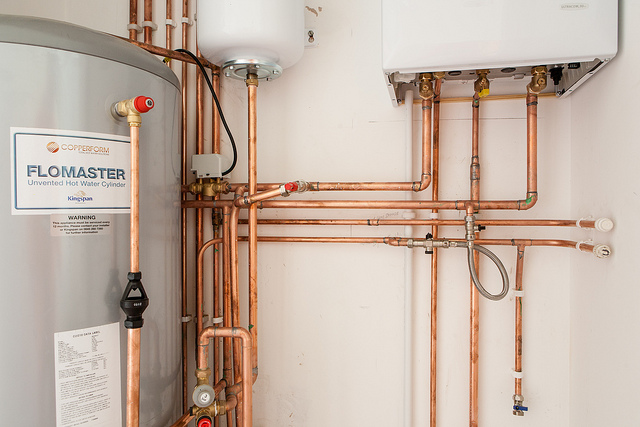Just like everything in your Macon home, your plumbing system has a life expectancy. And when these pipes, appliances, and fixtures begin to reach the end of that life expectancy, you could be facing some very costly water damaged. So homeowners must have a basic idea of the age of all components in their home’s plumbing system and a professional evaluation of the life left in these essential items.
The Pipes
As you can imagine, the most extensive component in your home’s plumbing system is the pipe. The water supply lines snake around your entire home, and some even extend to your yard and other spaces outside your home. The good news is that some of these pipes are exposed to let you know type of pipe used throughout your home. That information is the key to understanding how many years of service you can expect from the water lines in your home. For example, iron or steel piping will make it about 70 years, while copper adds another decade. Recently built homes are more likely to have PVC water lines that reach about half a century tops but more realistically 40 to 45 years to avoid the potential for catastrophic failure. If your home’s water lines are past their prime, getting a price quote for whole-house repiping is a wise choice.
Water Heaters
One of the most overlooked devices in your home but also the most critical is your water heater. The most common type of water heater is the traditional tank-style unit that holds around 50-80 gallons of water. These units deliver hot water for about 12 years as long as they get drained and flushed each year. Tankless water heaters are less common but offer a longer life of 20 or more years. That time frame is also dependent on regular maintenance. As your water heater reaches its end of life, routine visual inspections are the best way to avoid costly water damage from tank and fitting leaks.
Toilets
The structure of most toilets will last for about half a century. But that is not to say that the internal components can make it nearly that long. Fortunately, it takes about 10 minutes and a few dollars in parts from the hardware store to replace the moving parts inside most toilets. The most significant advances in toilet technology in the past few decades have the reduction in water consumption. Before 1994, toilets used between 5 and 7 gallons of water per flush. Today’s models have that number down to 2 gallons or less. So if water conservation is your goal, replacing an older toilet is a good investment.
Faucets
Today’s faucets offer much more than just a stream of water. You can opt for touchless operation and smart technology to turn off the water. But there is still no way to remove the mineral build-up that begins to clog your faucets and their nozzles. Hard water can wreak havoc on a tap in just a few years. But when using a water softener or living in a region with less mineral content in the water, you can expect about a dozen years of reliability from the average faucet. After that time, they become prone to leaks and control issues.
Knowing when these essential plumbing components are nearing the end of their reliability is the best way to avoid costly leaks and water damage in your home. Call (701) 402-6643 for an appointment to inspect your home’s plumbing and receive a free estimate from the A-1 Plumbing pros for any fixtures or components that should be replaced immediately.

